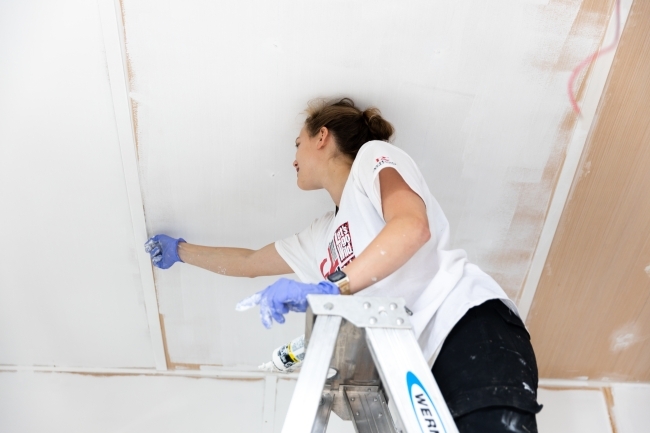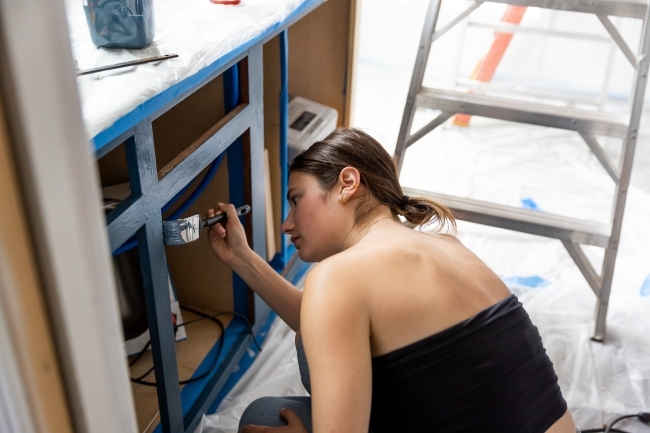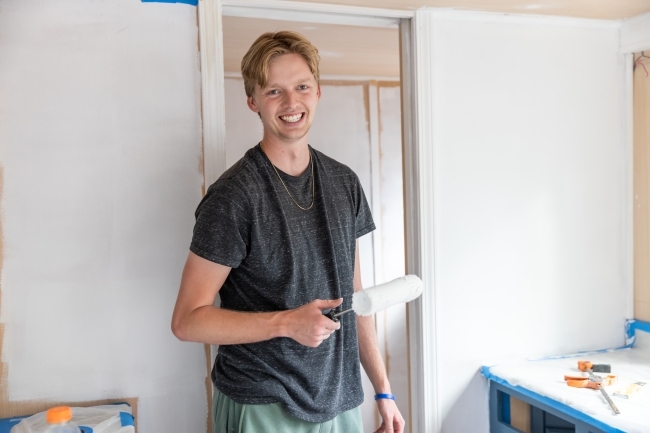My Davidson | A Student Blog Physics Majors Go DIY With Sustainable Tiny House Project
May 16, 2024

Last summer, three physics majors drew up plans to create a sustainable tiny house.
The previous year, the trio had worked together to create a hydrogen-powered go-kart as part of an independent study.
About the Author
Sydney Schertz ’24 (she/her) is an Educational Studies major from Chapel Hill, North Carolina. She served as photography assistant for the Office of College Communications.
That project spurred enough excitement for the group to tackle a next-level challenge. So, in the summer of 2023, they proposed a tiny house project.
In the coming months, seniors Branner D’Amato, Mallory Justis and Patrick Kielb devoted countless hours to the planning, design and execution of the project. Their hard work, complemented by support from faculty, community partnerships and college friends, including support from the Clark Ross Academic Innovation Fund, paid off in the final weeks of the school year. On May 1, 2024, the tiny house was presented as a quaint, functional and impressive structure at the Verna Miller Case Research and Creative Works Symposium.
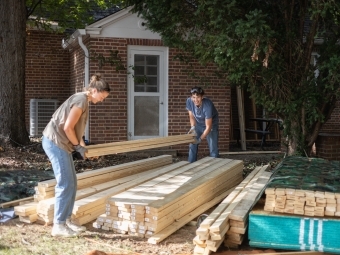
The summer was largely devoted to budgets, proposals and initial designs for the build. Once these logistics were finalized, the trio returned to campus to begin physical work on the house.
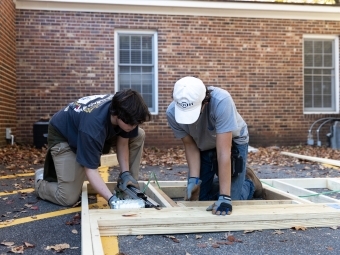
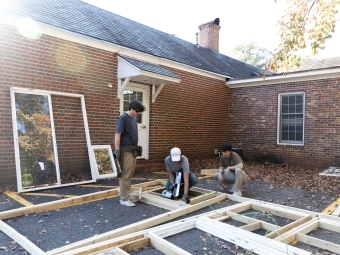
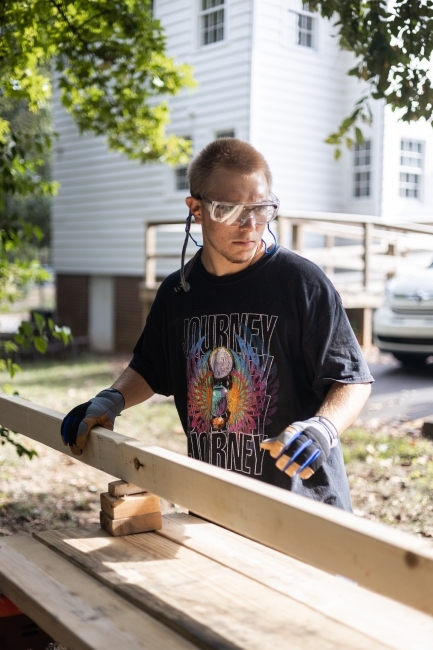
The house would be mounted on a trailer, which arrived at the end of October 2023. Before the trailer arrived, the group pre-framed two walls, designed the plumbing systems, and acquired recycled windows so they could work around the windows.
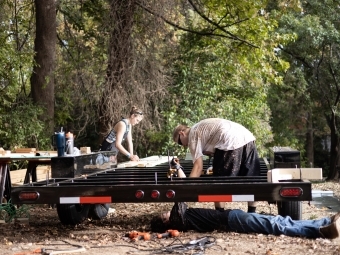
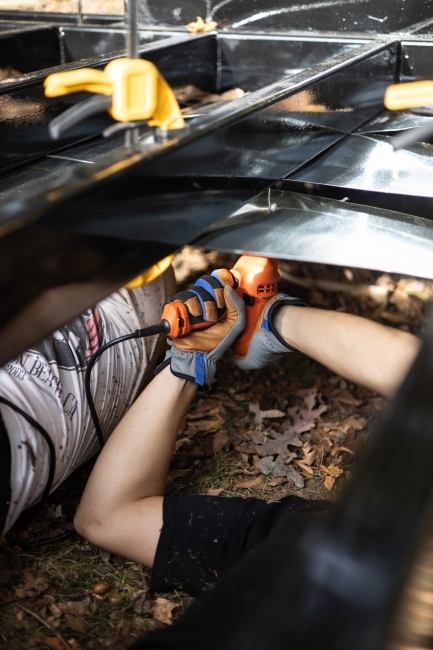
When the trailer arrived, they began construction and installed the flashing on the underside of the trailer. This was the most challenging part of the build and required them to lay underneath the trailer to drill pilot holes through steel.
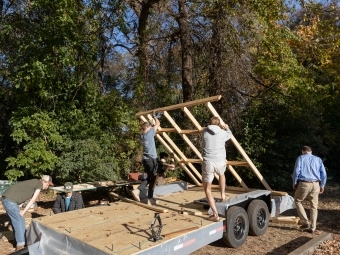
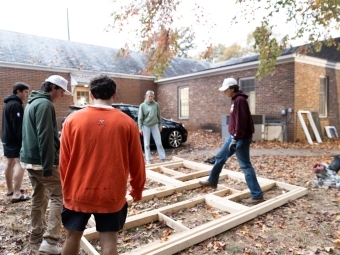
After a week, the flashing was complete and the group moved on to position the walls on the trailer. During this phase, student and faculty members were invited to help raise the walls. The groups noted how volunteer work was incredibly helpful and brought great energy into the space.
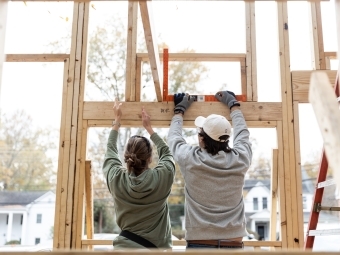
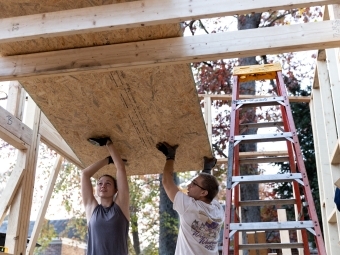

Next, they framed the loft and the roof. The loft would hold the bed and water tank, and the roof would later host solar panels designed to power the electrical systems.
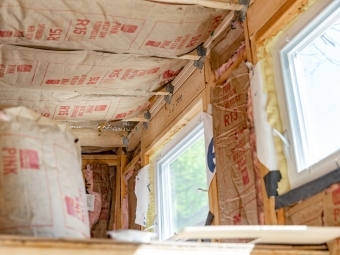
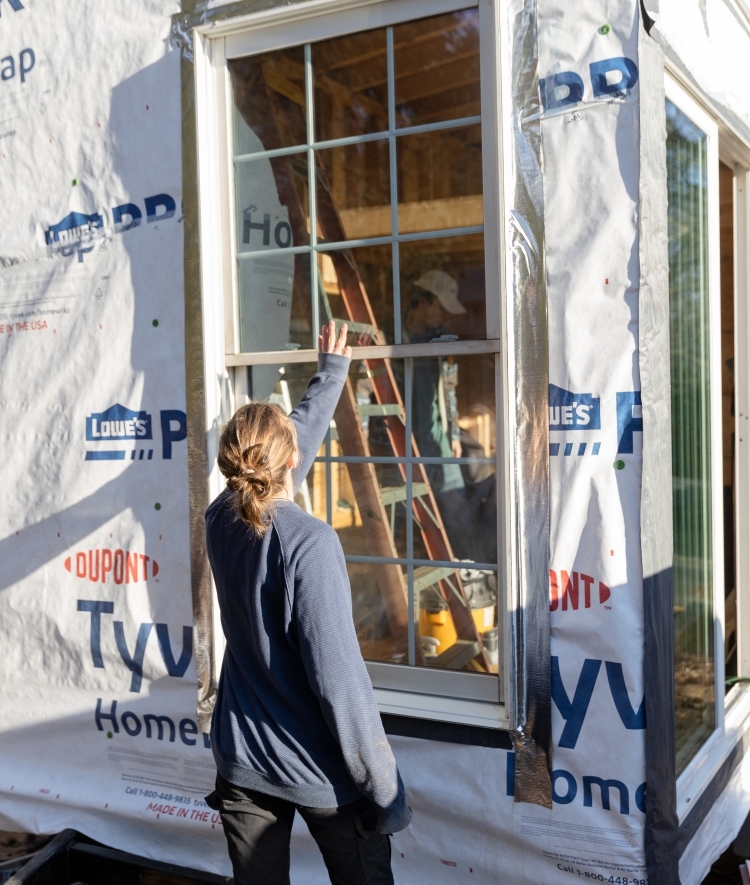
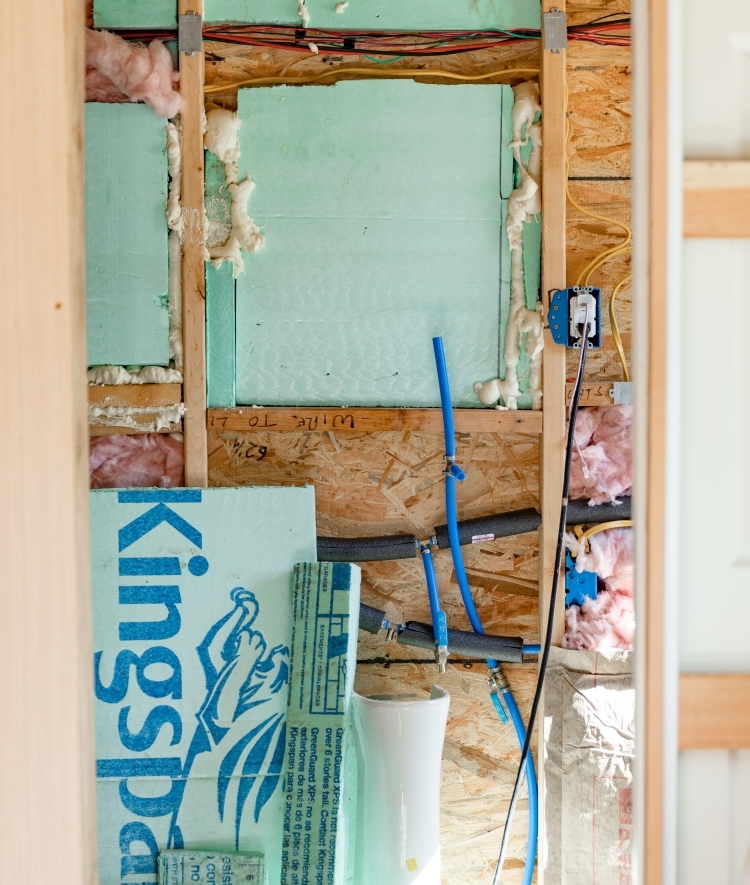
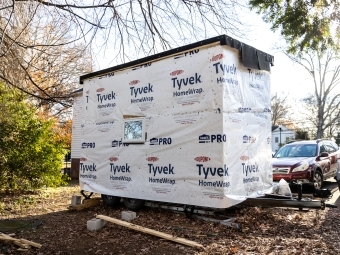
Once the walls were up, they weatherproofed the house and installed the insulation.
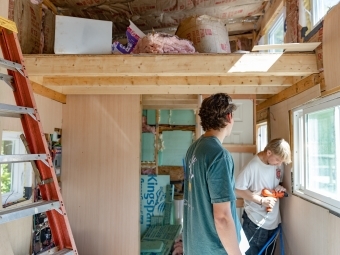
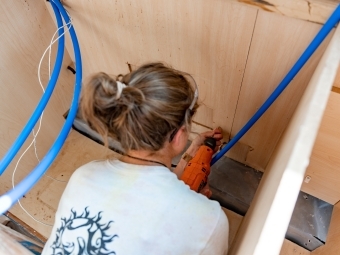
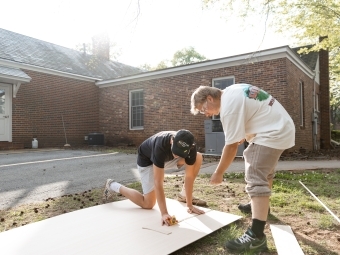
The interior walls were then lined with quarter-inch plywood.
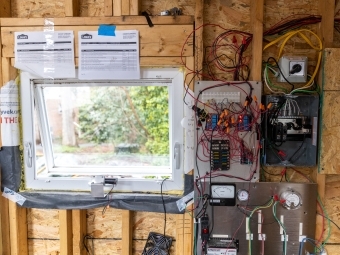

At this stage, the trio could test the battery and evaluate the electrical system and its ability to open and close both windows and blinds.
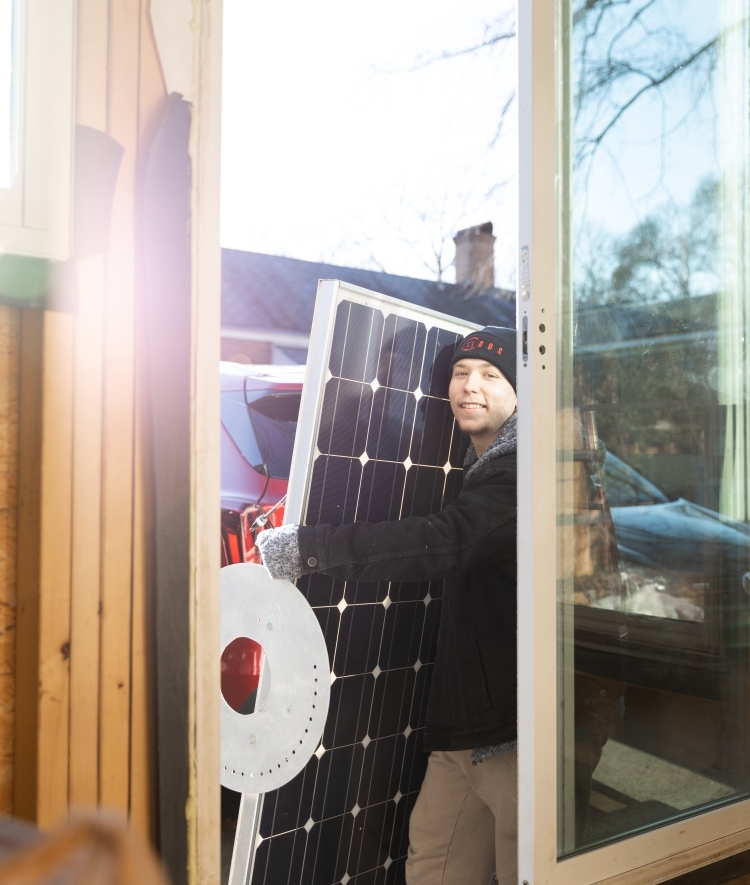
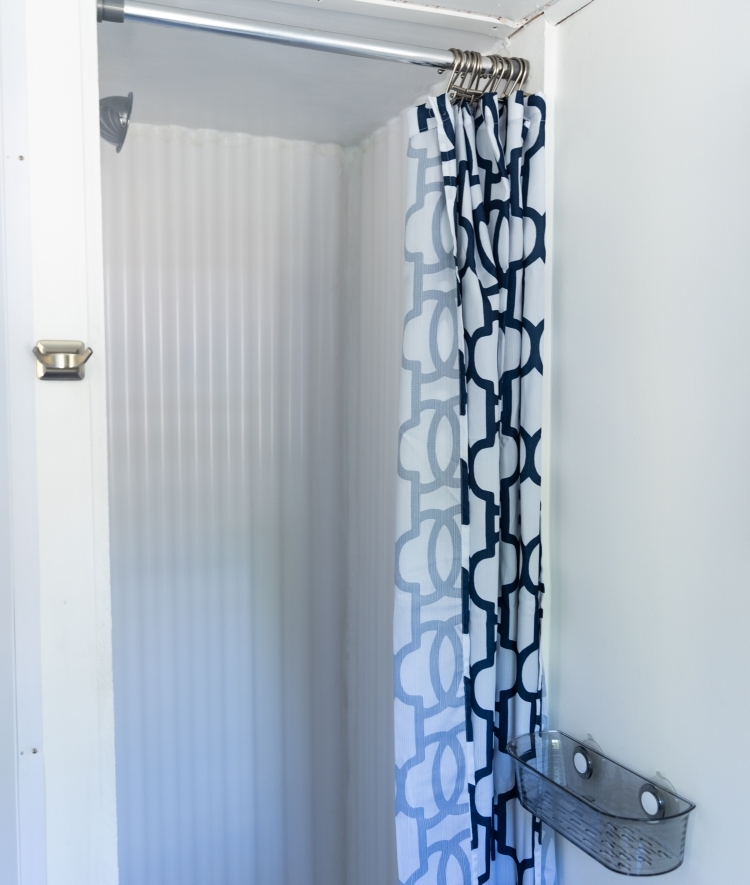
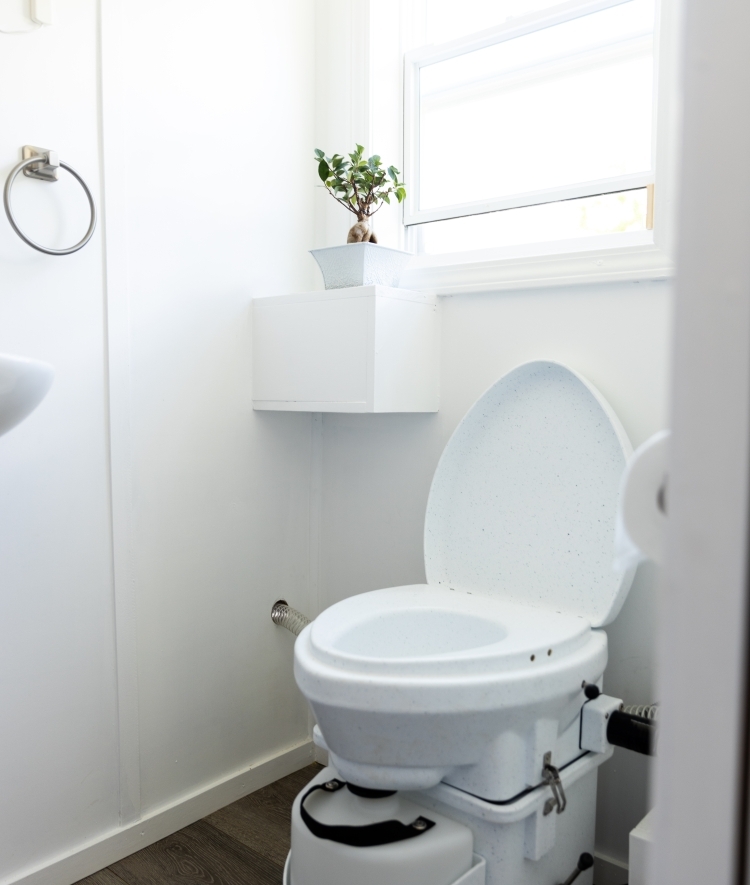
The solar panel on the roof was designed to charge the battery. The battery provides DC power to all the house's appliances (the shower, the toilet and the sink) and converts DC to AC power to charge all the house outlets. The shower and sinks drain into a gray water tank, and the toilet is a nature’s head composting toilet. In addition, the trio set up their electrical system to function both on and off the grid.
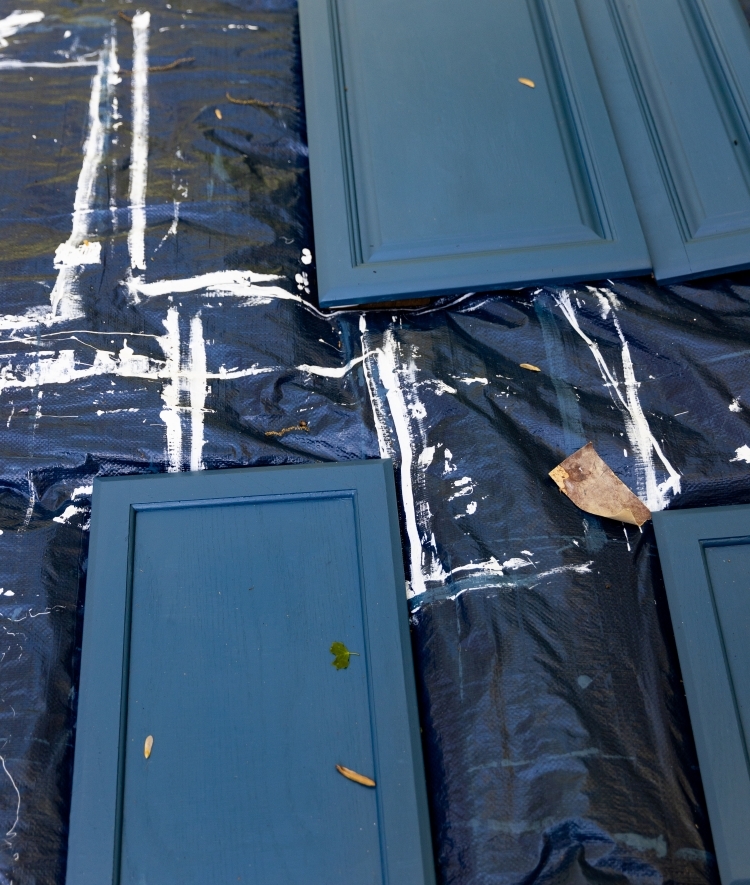
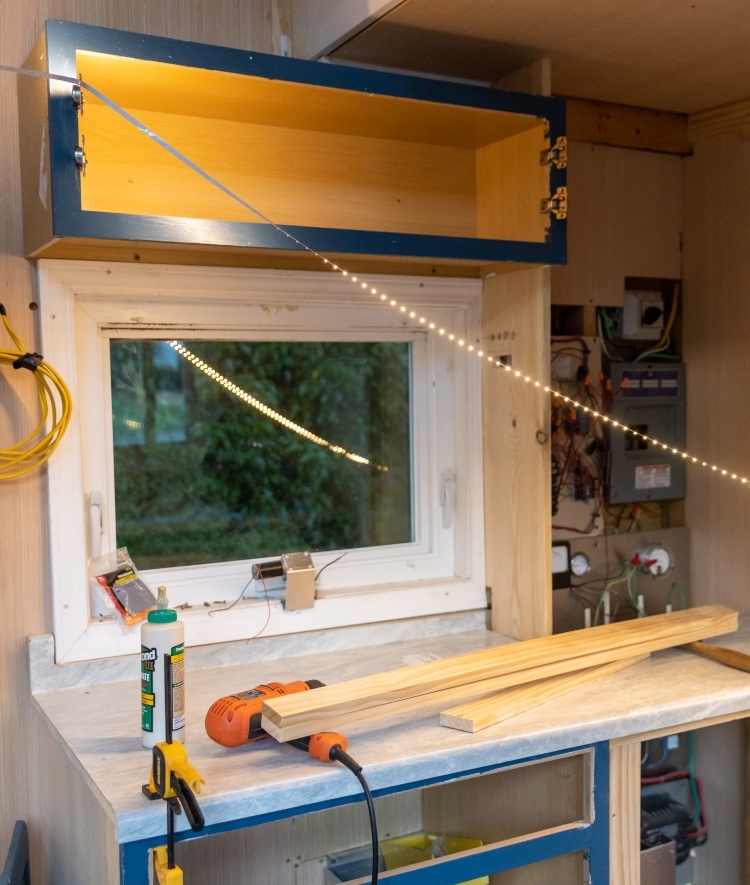
Once the electrical system was in place and the walls were insulated, the trio constructed the cabinets. They chose a rich navy blue and invited students for a group painting day.

Moving into the final stretch, the painting phase generated a lot of excitement from the group and the volunteers stopping by.
In the final days, the trio ensured their systems were functioning so that the house automatically regulated its interior temperature. The system was designed so that the windows, fan and blinds would move up and down to regulate the house’s interior temperature.
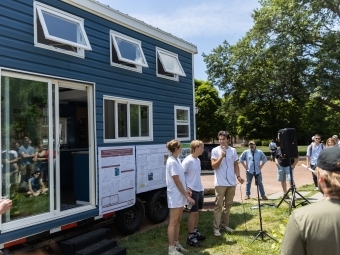
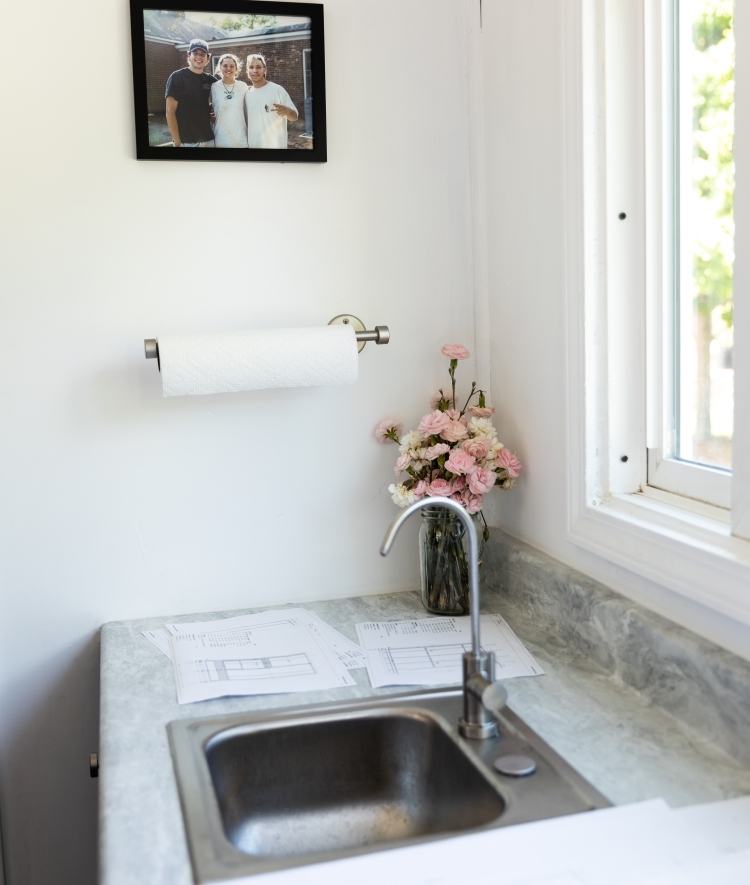
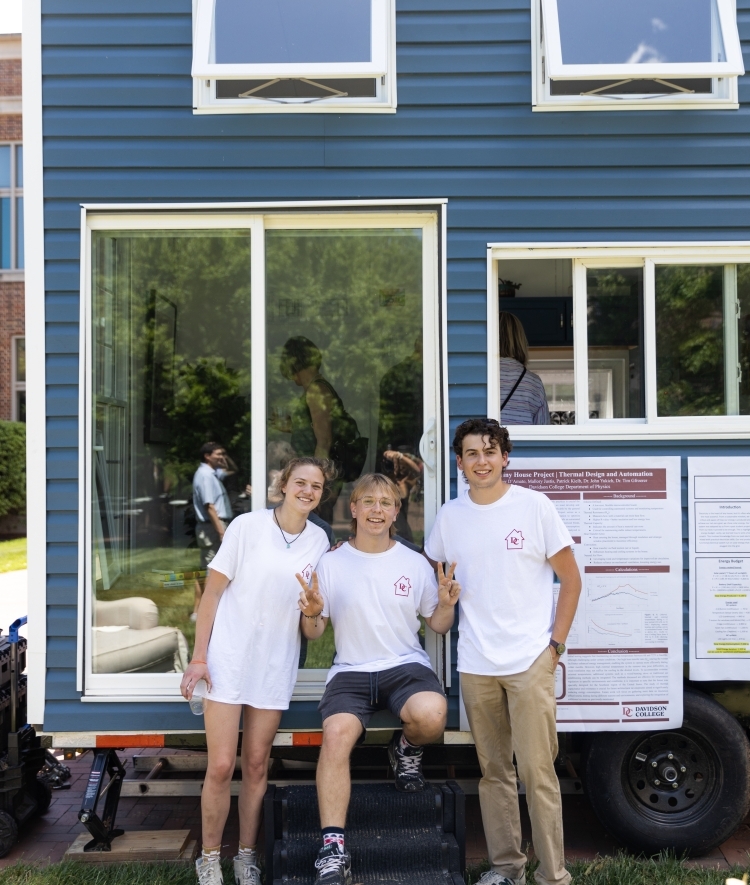
On May 1, at the Verna Miller Case Symposium, the trio presented their hard work. They attracted a large crowd filled with community members excited to witness the final product and congratulate them on their impressive achievement. The college, the student body and the trio themselves are incredibly proud of this tiny house.
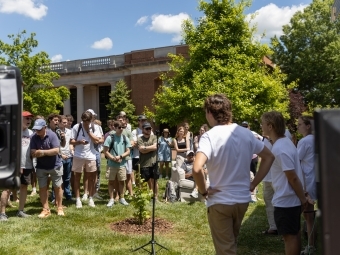
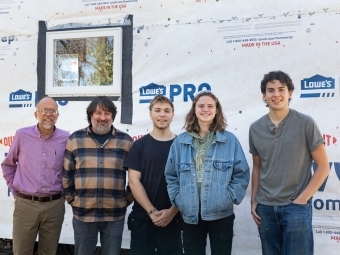
Faculty who supported and offered guidance for the project (l to r): Associate Professor of Physics John Yukich and Professor and Chair of Physics Tim Gfroerer
